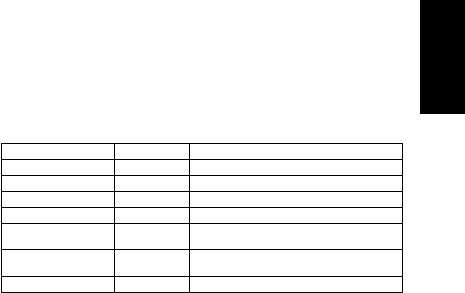Monster 190653 iSport Wireless Superslim User Manual LIT MAN iSport Wireless SS BT IE v4lf ENGLISHONLY
Monster, LLC iSport Wireless Superslim LIT MAN iSport Wireless SS BT IE v4lf ENGLISHONLY
Monster >
Contents
- 1. User Manual
- 2. LIT_MAN_iSport_Wireless_SS_BT_IE_v4lf_ENGLISHONLY
LIT_MAN_iSport_Wireless_SS_BT_IE_v4lf_ENGLISHONLY

Manual and Warranty · Manuel et Garantie · Handbuch und Garantieschein · Manual y Garantía
WIRELESS SUPERSLIM

Important Monster®
Performance and Safety Tips
Listen Responsibly
To avoid hearing damage, make sure that the
volume on your music player is turned down
before connecting your headphones. After
placing headphones in / on your ears, gradually
turn up the volume until you reach a comfortable
listening level.
Noise levels are measured in decibels (dB), exposure
to any noise at or above 85 dB can cause gradual
hearing loss.
Monitor your use; hearing loss is a function of
loudness versus time. The louder it is, the less
time you can be exposed to it. The softer it is, the
more time you can listen to it.
This decibel (dB) table compares some common
sounds and shows how they rank in potential
harm to hearing.
SOUND NOISE LEVEL (dB) EFFECT
Whisper 30 Very quiet
Quiet Oce 50–60 Comfortable hearing levels are under 60 dB
Vacuum Cleaner, Hair Dryer 70 Intrusive; interferes with telephone conversations
Food Blender 85–90 85 dB is the level at which hearing damage (8 hrs.) begins
Garbage Truck,
Cement Mixer
100 No more than 15 minutes of unprotected exposure
recommended for sounds between 90–100 dB
Power Saw, Drill/Jackhammer 110 Regular exposure to sound over 100 dB of more than
1 minute risks permanent hearing loss
Rock Concerts (varies) 110–140 Threshold of pain begins around 125 dB
Chart information obtained from www.nidcd.nih.gov/health/education/teachers/pages/common_sounds.aspx
ENGLISH

Get the most out of your equipment and enjoy
great audio performance even at safe levels. Our
headphones will allow you to hear more details at
lower volume levels than ever before.
Learn how to establish a safe listening level and
review other important safety guidelines from the
Consumer Electronics Association at www.ce.org.
Important information on how to prevent Noise-
Induced Hearing Loss (NIHL) and a comprehensive
list of which noises can cause damage can be
found on the Deafness Research Foundation’s
website, www.drf.org.
Physiology of the Ear and Hearing
For additional information on what loud noises do to your ear and
chart reference www.abelard.org/hear/hear.php#loud-music
Use Responsibly
Do not use headphones when it’s unsafe to do so –
while operating a vehicle, riding a bike, crossing
streets, or during any activity or in an environment
where your full attention to your surroundings
is required.
It‘s dangerous to drive while wearing headphones,
and in many places, illegal because it decreases
your chances of hearing life-saving sounds outside
of your vehicle, such as another car’s horn and
emergency vehicle sirens.
Please avoid wearing your headphones while
driving. Use one of Monster’s FM transmitters to
listen to your mobile media devices instead.
Headphones “Break-in”
Break in time for headphones? We’re kidding,
right? No we’re not. Like any high performance
product, whether it’s cars or headphones, they’re
mechanical devices that settle in after use. Your
new headphones will sound incredible out of the
box, but will “mellow” out after use and sound even
better. We recommend playing them for 8 hours.
After 20 hours of playing, they should be fully
broken in. Enjoy.
Malleus Cochlear Nerve
Stapes
Tympanic
Membrane
Auditory Canal Cochlea
Incus
Vestibule
To Nose/Throat
Battery
If applicable, battery must be recycled or disposed
of properly.
Information to consumers in application
of EU WEEE Directive 96/2002
This product is subject to European Union
regulations that promote the re-use